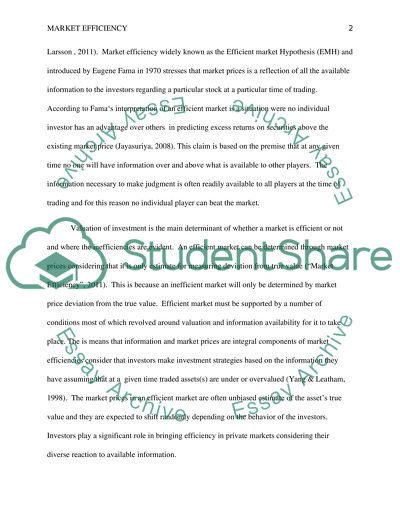Cite this document
(“Market efficiency Assignment Example | Topics and Well Written Essays - 2000 words”, n.d.)
Retrieved de https://studentshare.org/education/1404573-economics-of-public-education-
Retrieved de https://studentshare.org/education/1404573-economics-of-public-education-
(Market Efficiency Assignment Example | Topics and Well Written Essays - 2000 Words)
https://studentshare.org/education/1404573-economics-of-public-education-.
https://studentshare.org/education/1404573-economics-of-public-education-.
“Market Efficiency Assignment Example | Topics and Well Written Essays - 2000 Words”, n.d. https://studentshare.org/education/1404573-economics-of-public-education-.


